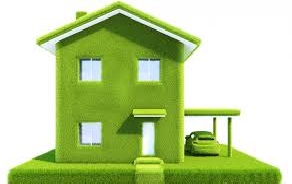Around 50 per cent of residential complexes (with more than 500 dwelling units/flats) in the tech capital have achieved a high level of efficiency in using energy, water and other resources on their premises and cut down pollution by incorporating green architecture practices, revealed a study by Karnataka State Pollution Control Board (KSPCB) and Environmental Management and Policy Research Institute (EMPRI).
The assessment, said to be the first of its kind in Bengaluru, was carried out by the pollution watchdog after analysing 95 large apartments on over 15 green building-related parameters. The top 10 apartment complexes were rewarded on Tuesday, and topping the list was Army Welfare Housing Organisation’s (AWHO) Sandeep Vihar apartment, located on Whitefield-Hoskote Road.
“A total of 95 apartments were assessed as part of the survey. Out of them about 54 have been identified for following good practices and eco-friendly measures to minimize carbon emission from the energy used within their building. We also checked the use of hydro fluorocarbons (HFCs) used in refrigeration, ACs, foam insulation and cookstove emission of methane and nitrous oxide,” explained Srinivasulu, member-secretary, KSPCB.
The building assessment, initiated by the pollution board, was carried out by the EMPRI team comprising researchers N Hema and Vinutha R along with civil engineering student volunteers from RVCE, Bengaluru. The team visited apartment buildings for over 30 days and assessed them on parameters such as operation of sewage treatment plants (STPs), usage of treated water, solid waste disposal, rainwater harvesting, solar energy consumption, e-waste management and reuse of STP sludge. The apartments were marked on a scale of 41 marks.
According to Shanth A Thimmaiah, chairperson, KSPCB, “Sandeep Vihar housing complex exhibited significant environmental and green components needed of a building. The treated water was used for flushing and gardening, the STP sludge was used as manure for plants in the garden and solid waste was composted on the premises. Besides, the manure was tested at a lab for NPK value. Hazardous bio-medical and e-waste were handed over to empanelled vendors. Solar panels were used to heat water besides lighting the common areas using sensors. The apartment had also ensured some amount of resource efficiency by using refurbished and re-manufactured materials to minimize concrete and cement consumption. Insulated glass windows were used for optimum use of energy and the building was cooled through a decentralised cooling system.”
KSPCB officials said the major objective behind the assessment programme was to educate and spread the green message among apartments in the city.
Srinivasulu said green buildings provide one of the most cost-effective solutions to climate change and can lead to significant environmental, economic and social benefits.



